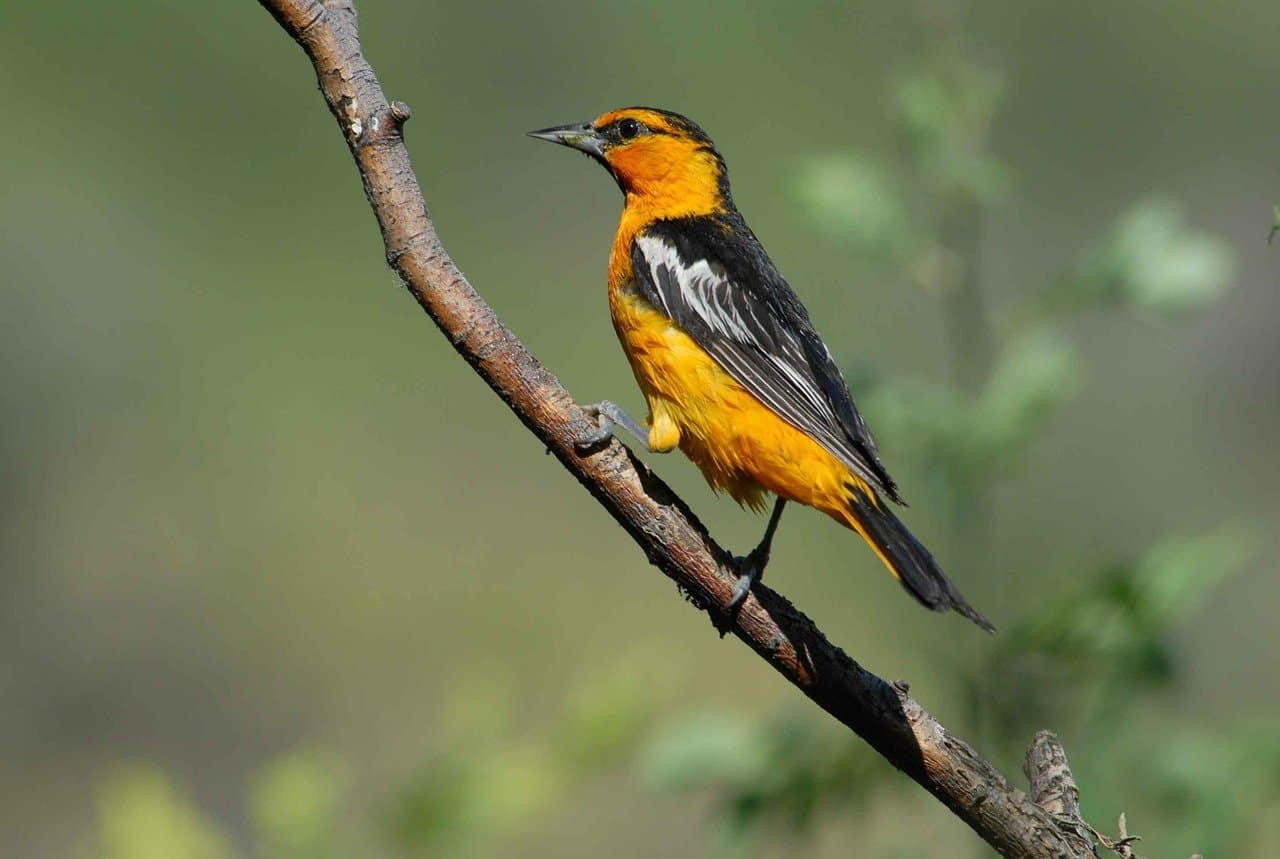A complete identification list of orange birds with black wings throughout the US and Canada including photos & details about each species.
Did you spot an orange bird with black wings and wonder what type it is? Or maybe you’d like to see an orange bird with black wings someday and want to learn more about them. Congrats – you’re in the right place! This article includes the species of wild orange birds in the US and Canada with black wings.
The birds included in this article could be entirely orange with black wings or partly orange. They could be bright orange, dull orange, or some other shade of orange. They could have jet-black wings or charcoal-black wings. It could be only the female or male of the species that are orange and black. Regardless, they’re all here!
The next step is to identify it.
A beautiful photo of each bird and their range map are included to help you identify the one you’re interested in – or hope to see one day.
It doesn’t stop there. You’ll also learn about the bird’s habitat, diet, nesting habits, and what foods they’ll eat at the feeder.
The range maps are color-coded so you know if it’s a year-round bird, there to breed, migrating through, or there during a nonbreeding time.

With more than 20 years of experience attracting backyard birds to my yard in Wisconsin, I’ve studied all of the orange birds with black wings in my area so I have the information you’re looking for. For the remaining species, I rely on my trusty sourcebooks and friends at The Cornell Lab of Ornithology to guide me.
Orange Birds with Black Wings
Altamira Oriole
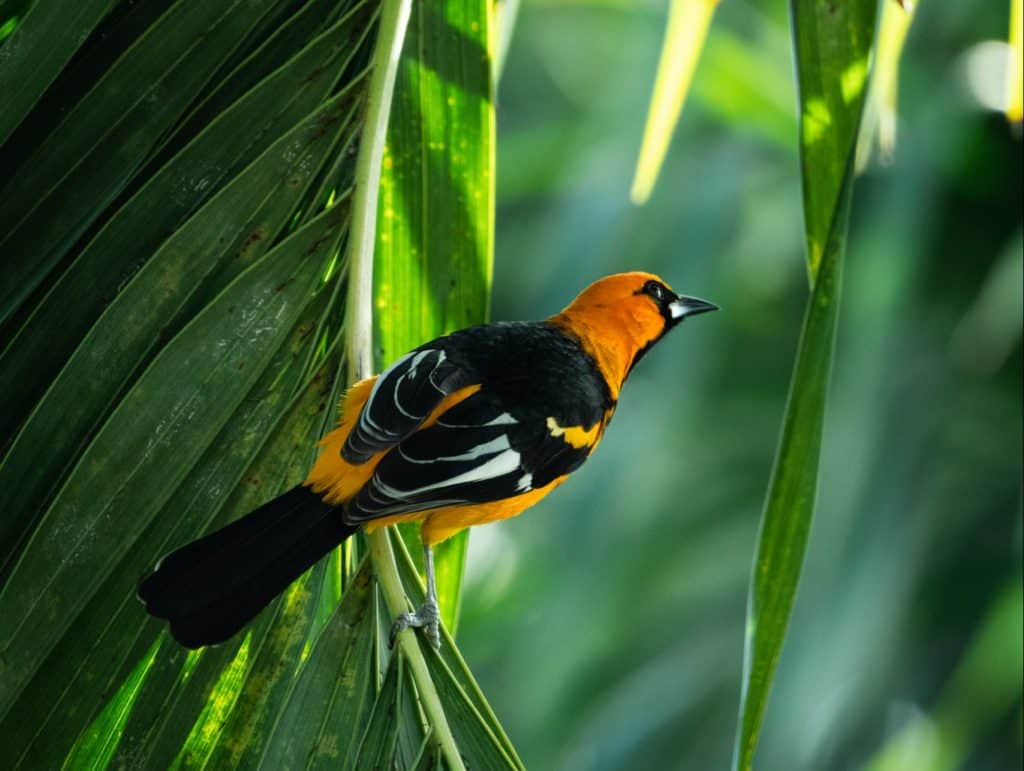
| Appearance | The Altamira oriole is a medium-size bird, but large for an oriole, at about 9″ long. They are bright, deep orange with black on their face, throat, back, wings, and tail. They also have a thick, pointy bill. The female looks the same. |
| Diet | Flower nectar, fruits, insects, and berries. |
| Feeder Food | Fresh fruit such as oranges and grapes, sugar-water nectar, as well as sunflower seeds. |
| Habitat | Although mostly a tropical bird found in Mexico and South America, it’s slowly inched northward into Texas where they prefer lightly wooded areas and edges. |
| Nesting | The pouch-like nest is suspended at the end of forked branches about 10-80′ up in a tree. They have about 4-6 eggs that are blue/white in color and speckled with black and lavender. |
Range Map
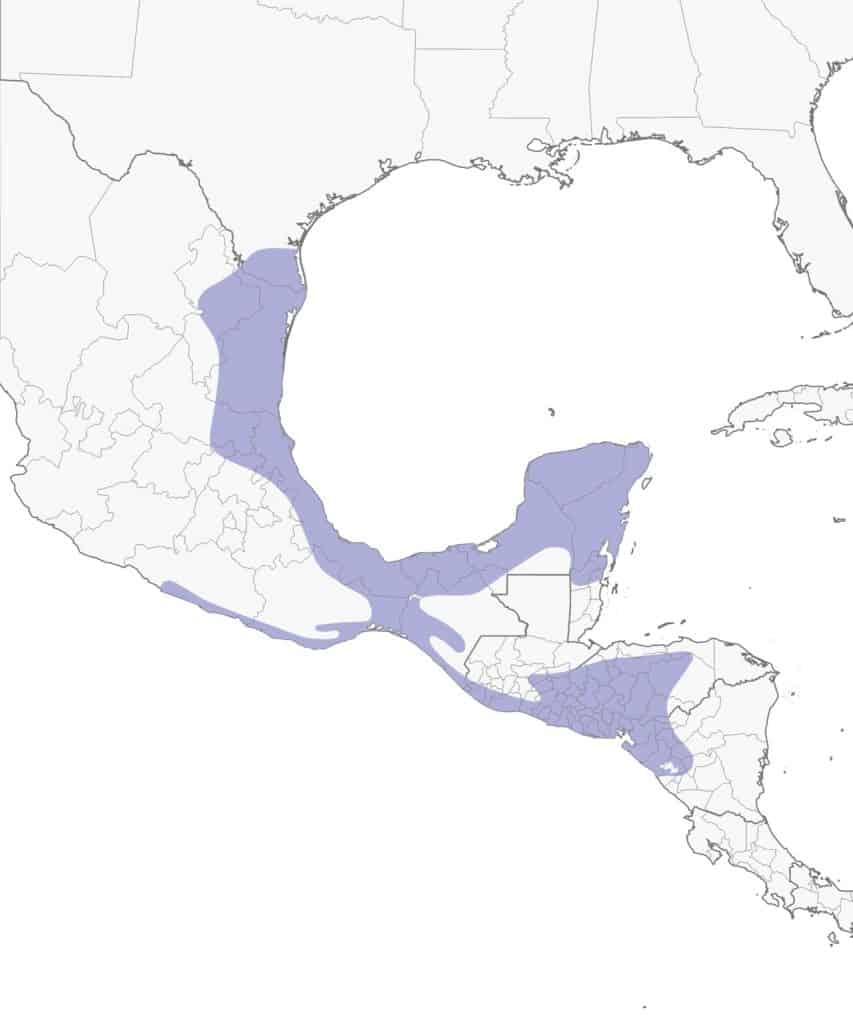
American Redstart
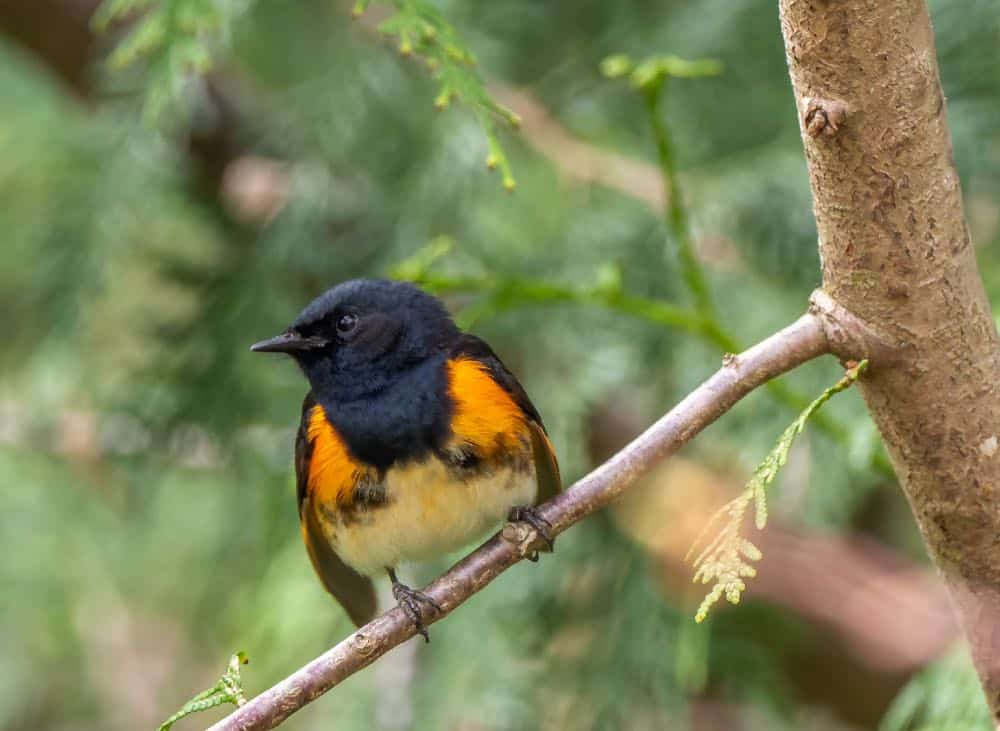
| Appearance | Medium-sized bird about 4.5-5″ long, mostly black, white belly, orange stripes and patches on the tail, wings, and side. Female have soft gray head, olive back and sings, white belly and yellow/orange stripes & patches on the tail, wings, and side. |
| Diet | Insects, small berries and fruits from shrubs. |
| Feeder Food | Unlikely to visit a feeder. |
| Habitat | Found in every contiguous US state and parts of Canada. Prefers open wooded areas especially those with deciduous trees. |
| Nesting | 1-5 eggs, eggs are white with brown or reddish spots, incubation is 10-13 days. |
Range Map
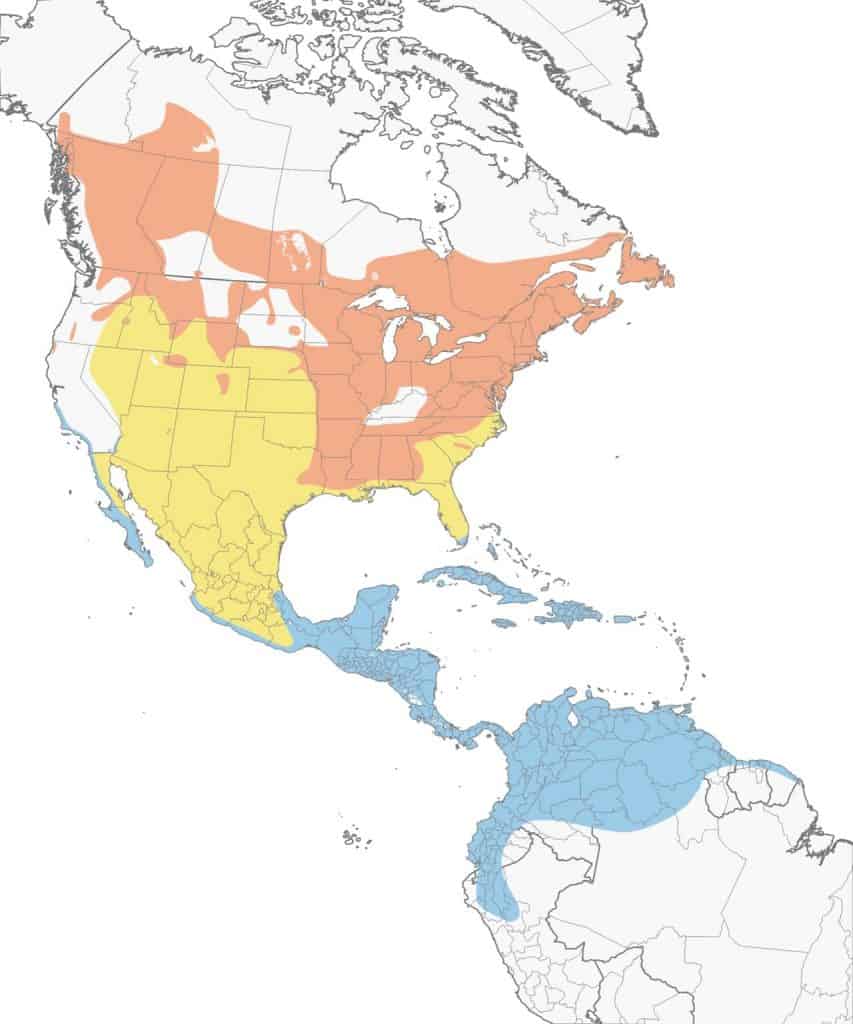
Baltimore Oriole
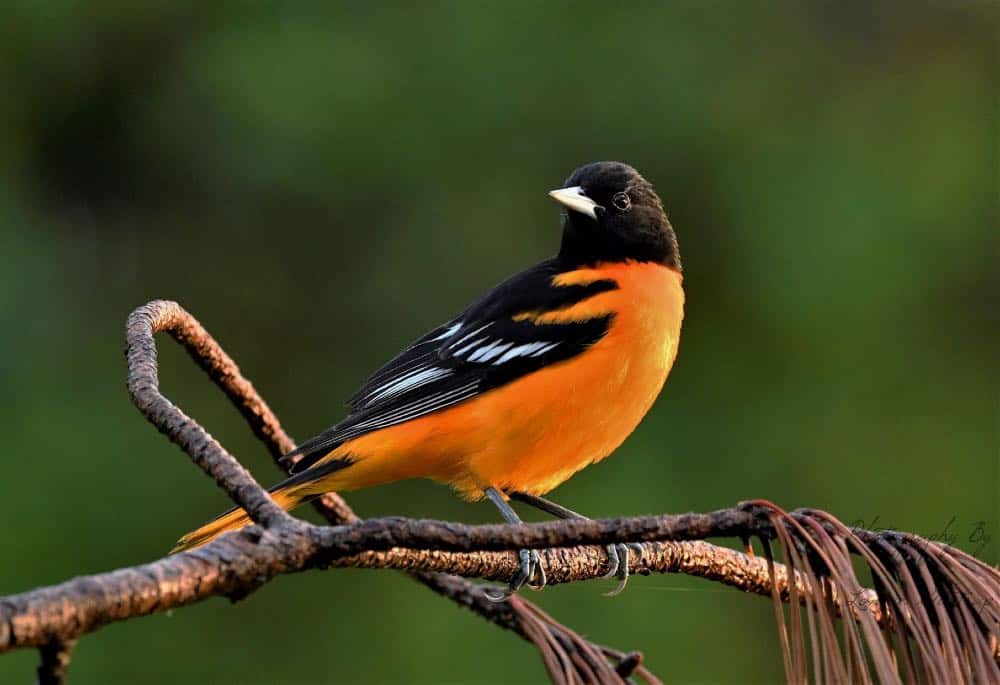
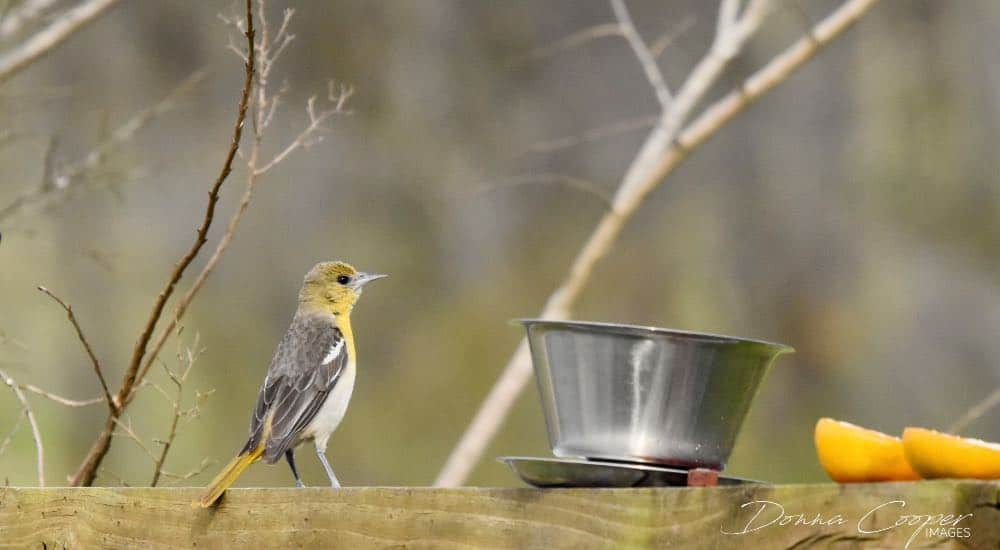
| Appearance | Medium-sized bird about 8.25″ long. Male Baltimore orioles have a flaming orange body and black head with black and white wing bars. The tail is orange with black and white streaks. The female and juvenile birds have pale yellow heads and bodies with grayish-brown wings and white wing bars. Both genders have a gray bill and dark eyes. |
| Diet | Insects, berries, and nectar from flowers. |
| Feeder Food | Baltimore Orioles will eat sweet foods such as nectar, oranges, and regular grape jelly. |
| Habitat | Baltimore orioles can be found in residential areas and wooded edges rich with high, deciduous shade trees – especially during breeding. They often nest near natural water sources such as ponds and rivers. |
| Nesting | The female builds a 4-6″ hanging long purse-style nest suspended on the end of a forked branch and only has one brood per year. About 4-5 bluish-colored eggs with brown markings are incubated for 12-14 days. |
Range Map
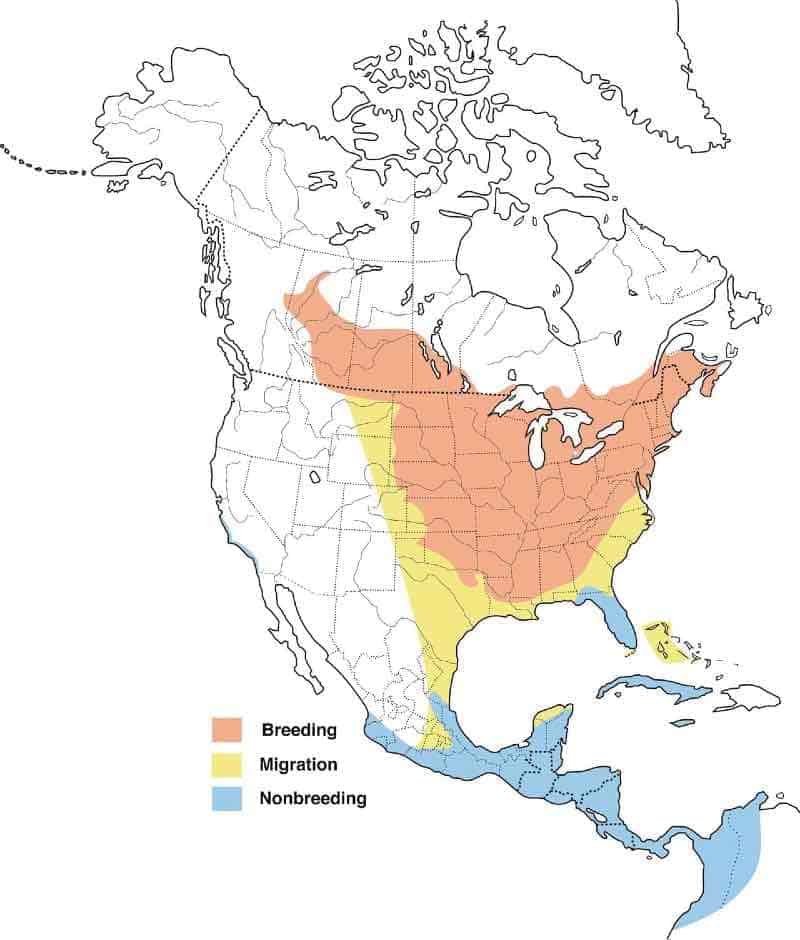
Black-Headed Grosbeak
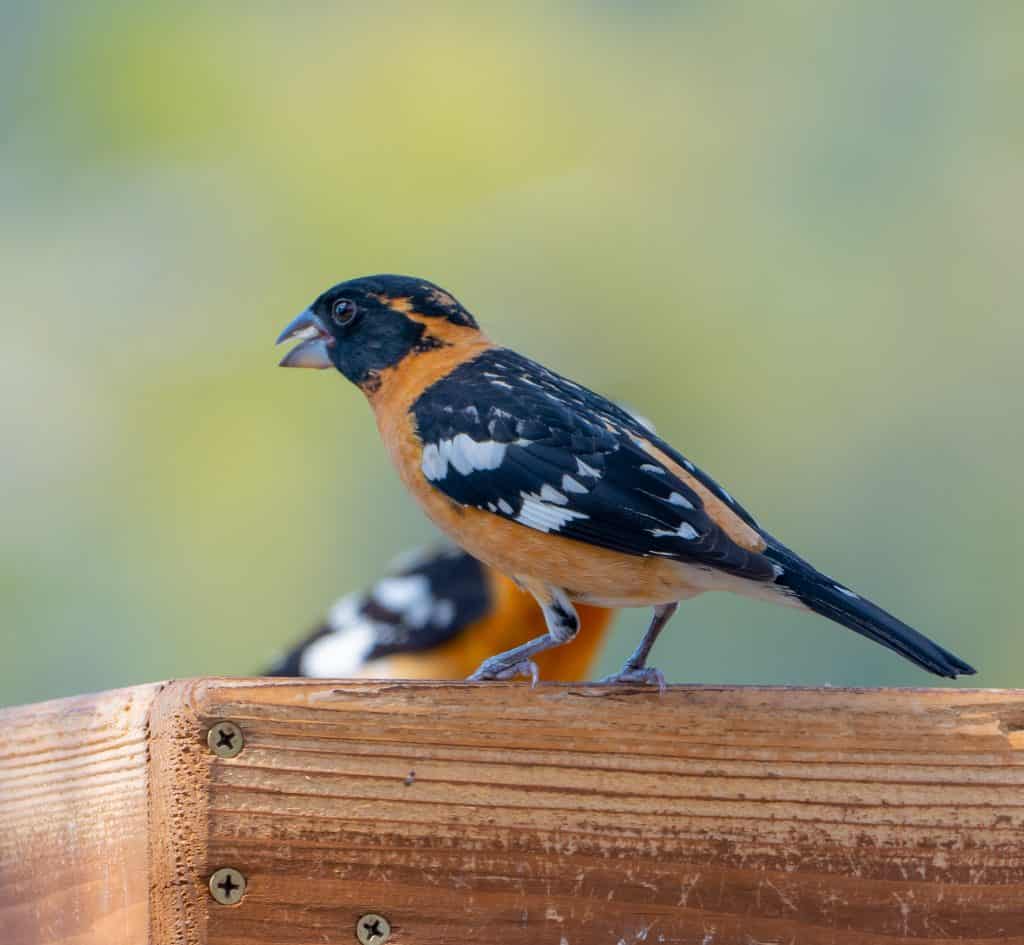
| Appearance | The black-headed grosbeak is a medium-sized bird about 8 1/4″ long. They have orange-cinnamon underparts, a black head, and black-and-white wings. The female is brown above with orange-brown streaks underneath, white eyebrows, and white wingbars. |
| Diet | Insects, seeds, buds, and fruit. |
| Feeder Food | Sunflower seeds, nectar. |
| Habitat | Open woodlands, lowlands as well as in wooded backyards. |
| Nesting | They build a large nest – about 5-7″ in diameter – and place them on the outer branch of a deciduous tree or shrub 6-12′ up. They have 1 brood/season and 2-5 eggs/brood that are green/blue with spots. Incubation is for 12-14 days and fledglings leave the nest at about 10-14 days. |
Range Map
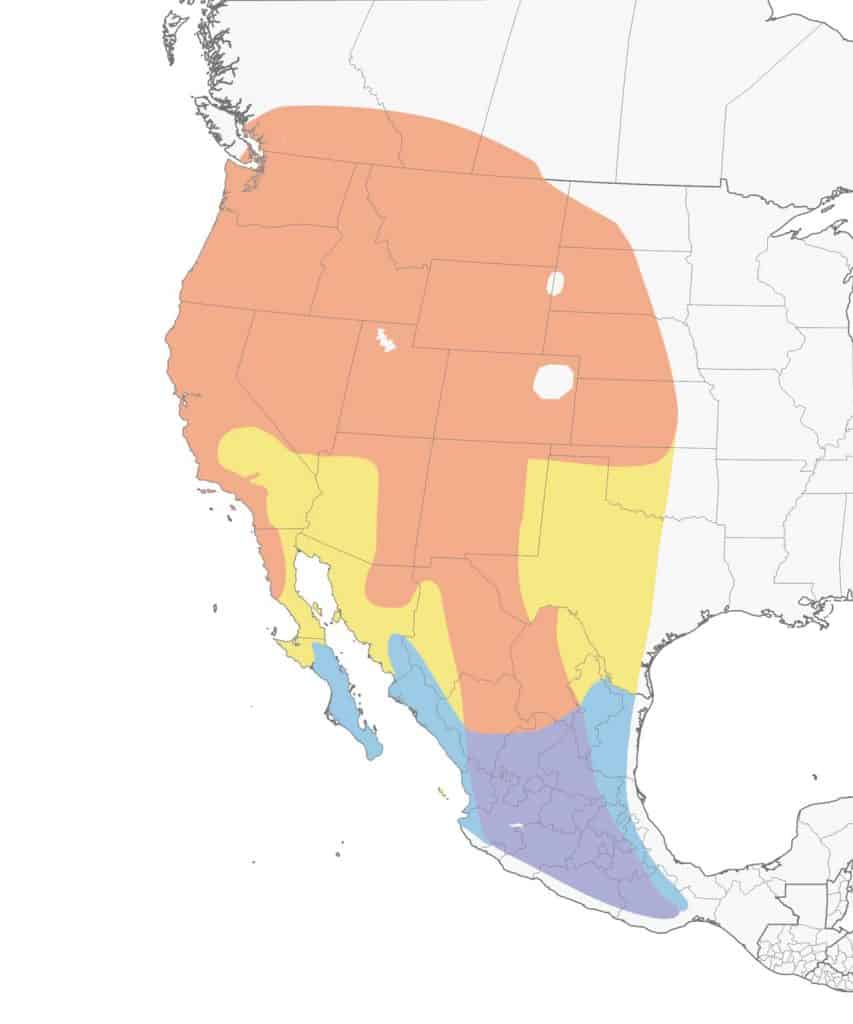
Black-Vented Oriole
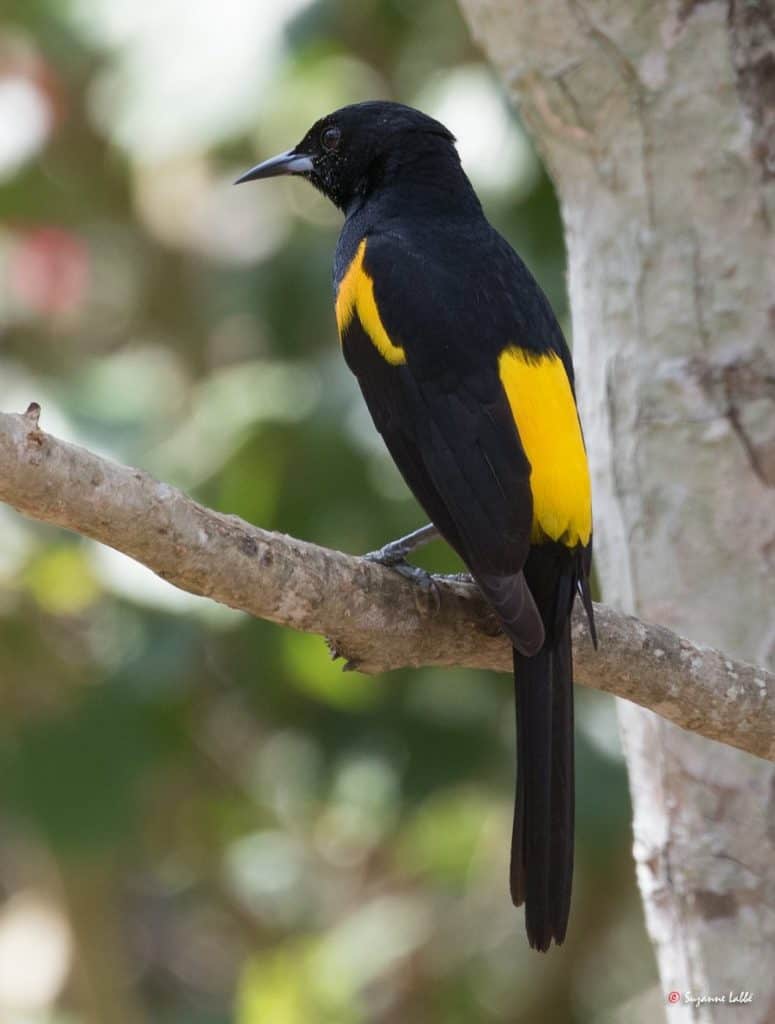
| Appearance | Black-vented orioles have black heads, throats, backs, wings, and tails. The remaining parts of their body are burnt orange. They have a very long tail and long pointy bill. The female looks the same. |
| Diet | Unknown |
| Feeder Food | Unknown |
| Habitat | Dry forested areas and open wooded edges of mountain foothills. |
| Nesting | Unknown |
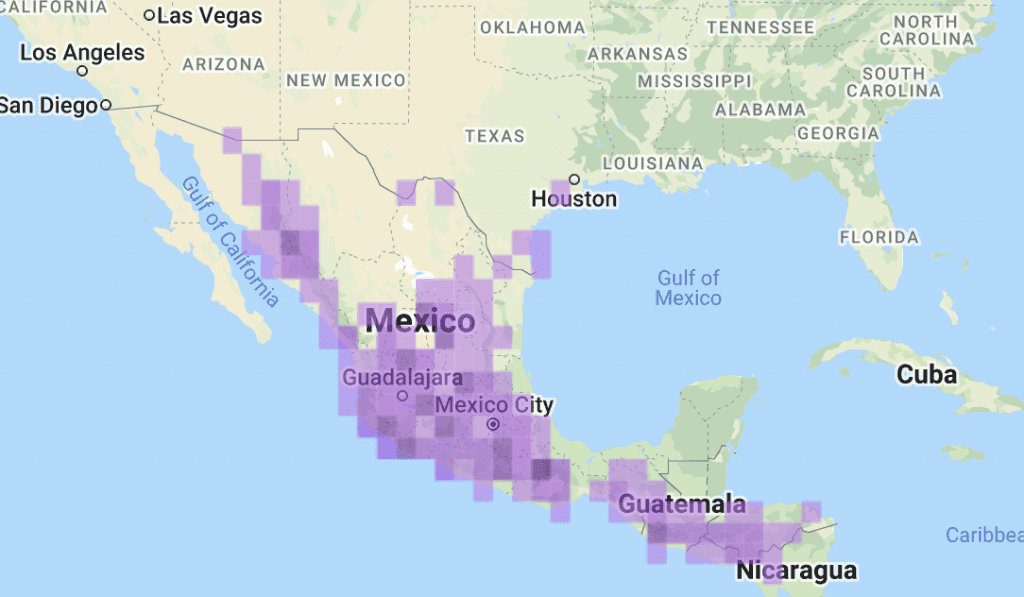
Blackburnian Warbler
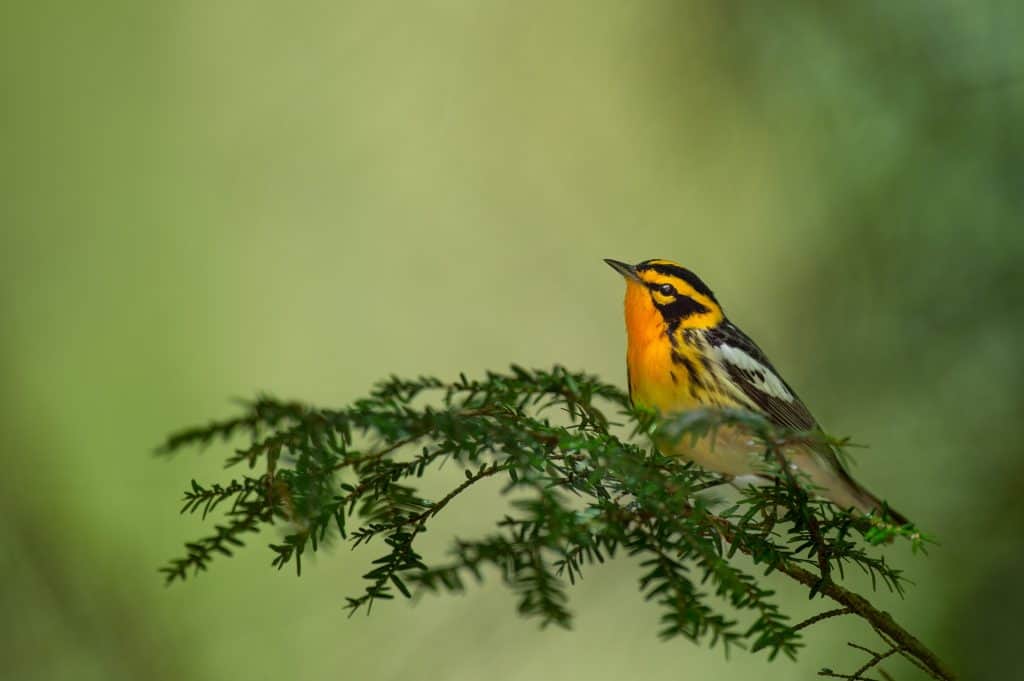
| Appearance | The Blackburnian warbler is a small bird about 4.5″ long. They have a vivid orange face and throat with a black crown and triangular tripe behind the eyes. The wings are black with white stripes, the belly is pale yellow with black streaks and their bills are short and pointy. The female is similar except she’s much paler all over and yellow instead of orange. |
| Diet | Insects and berries. |
| Feeder Food | Unlikely to visit a feeder, however, may be enticed with mealworms. |
| Habitat | Prefer deep forested areas of deciduous and coniferous trees. Often found perched on the tip-top of a spruce tree. |
| Nesting | Their nest is placed high in a coniferous tree near the end of an upper limb. They have 1 brood/season and 3-5 eggs/brood that are white or greenish/white with brown speckles. |
Range Map
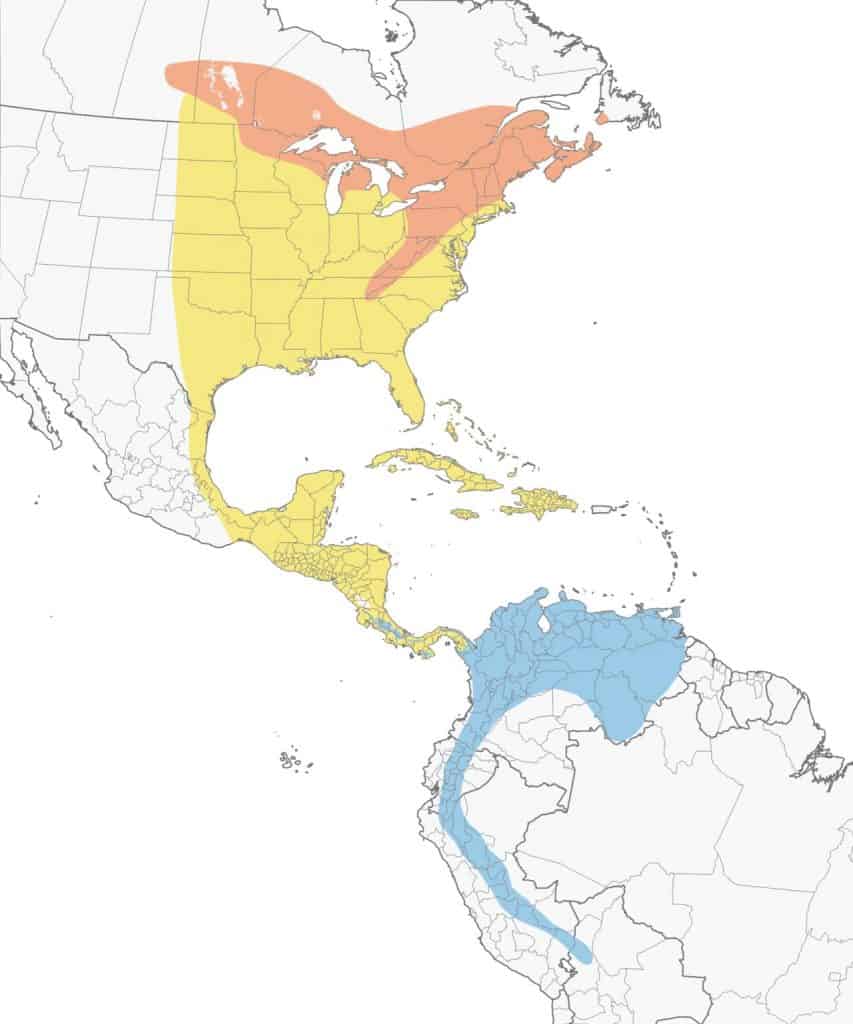
Bullock’s Oriole
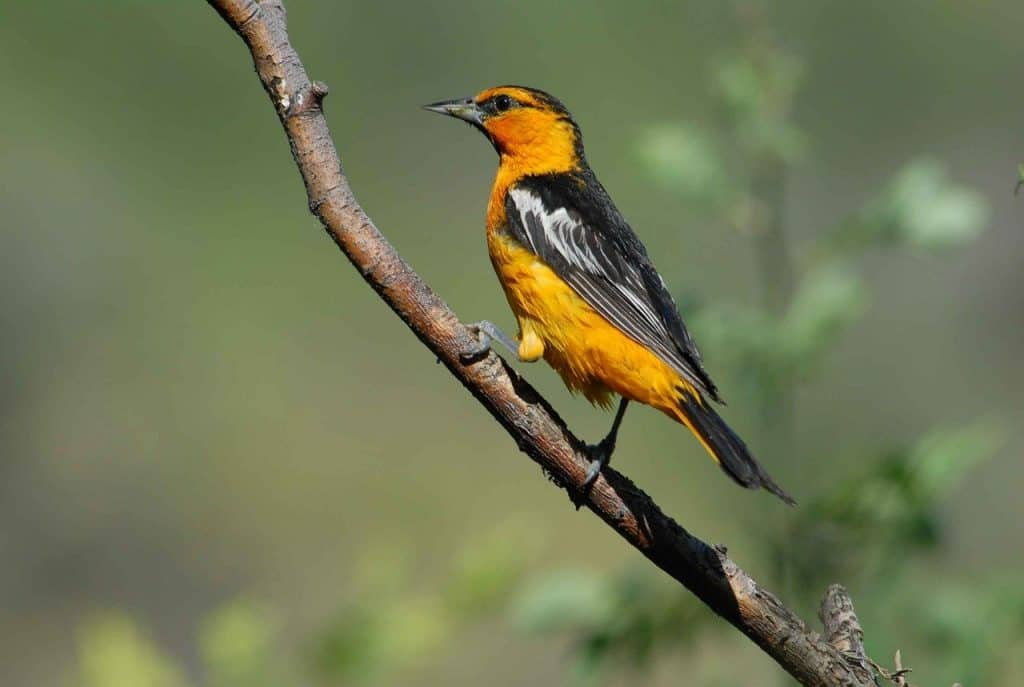
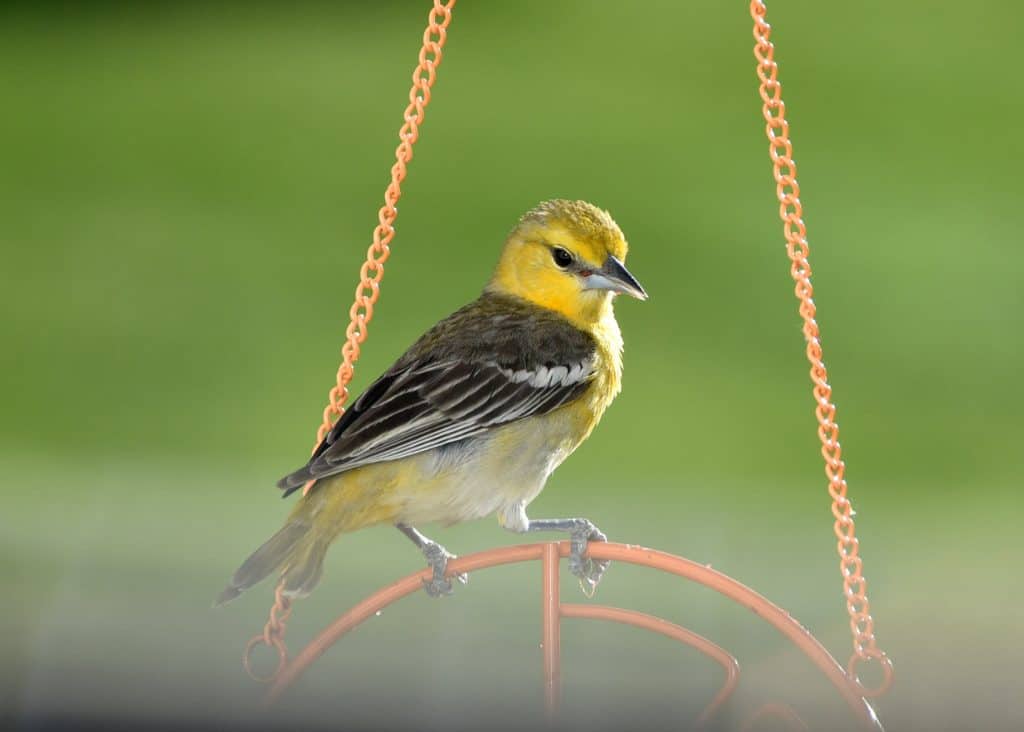
| Appearance | The Bullock’s oriole is a medium-sized bird about 8″ long. They’re orange with a black crown, eye stripes, throat, back, and wings (+ white wingbars). During the first spring, a juvenile male is more yellow-orange with a black mask and throat. The female is yellow with a dark stripe through the middle her eyes, and grayish-black only on her wings. White wingbars accent the black. |
| Diet | Insects, spiders, fruits, and nectar. |
| Feeder Food | Cut fruit, jelly, or nectar. |
| Habitat | Open wooded areas especially along riverbanks. |
| Nesting | Bullock’s orioles build a hanging pouch style nest about 10-20′ high in a tree or shrub and is suspended from a forked branch. They have 4-5 eggs/brood that are incubated for 11-14 days. The eggs are pale blue/white with purplish-brown spots. Fledglings leave the nest at about 14 days. |
Range Map
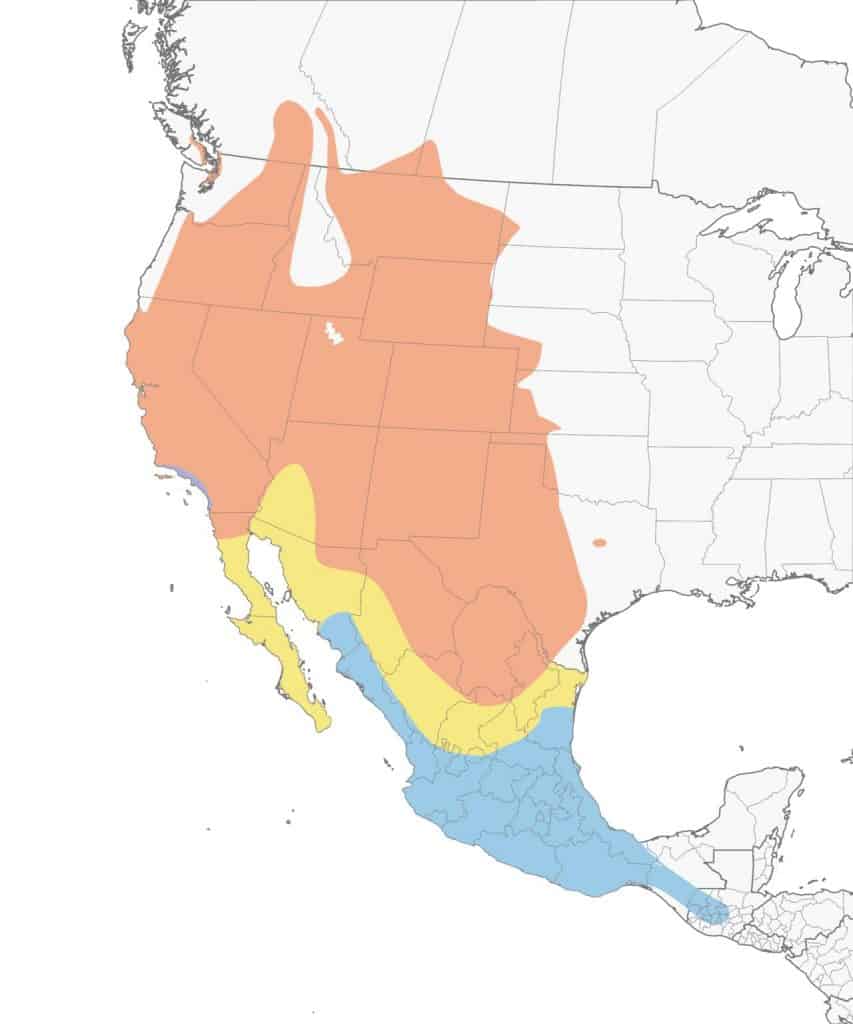
Eastern Towhee
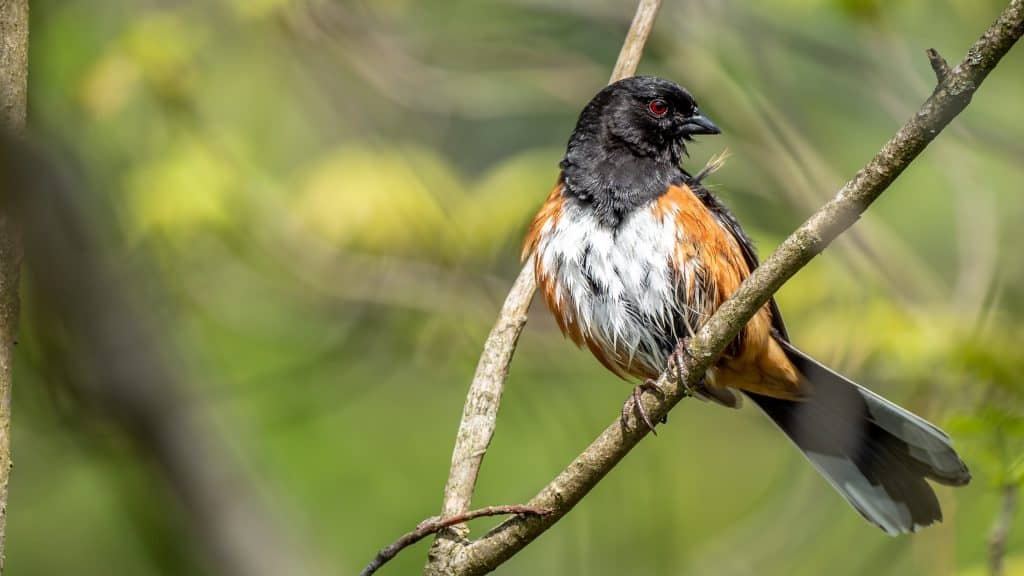
| Appearance | Small-medium-sized bird about 7-8″, mostly charcoal black with rusty-orange on the sides and a white belly. They have a long black tail with a white tip. The bill is short and pointy. They have ruby red eyes. The Female is the same but brown not black. |
| Diet | Insects, seeds, and fruit. |
| Feeder Food | Ground feeder and will eat black-oil sunflower seeds, cracked corn, millet, milo, and peanut hearts. |
| Habitat | Scrubby areas along wooded edges, thick fields, and backyards. |
| Nesting | The cup-shaped nest is typically located on the ground. They have 2 broods/year, and 3-4 eggs/brood. Eggs are ivory with brown spots and incubation lasts 12-13 days. |
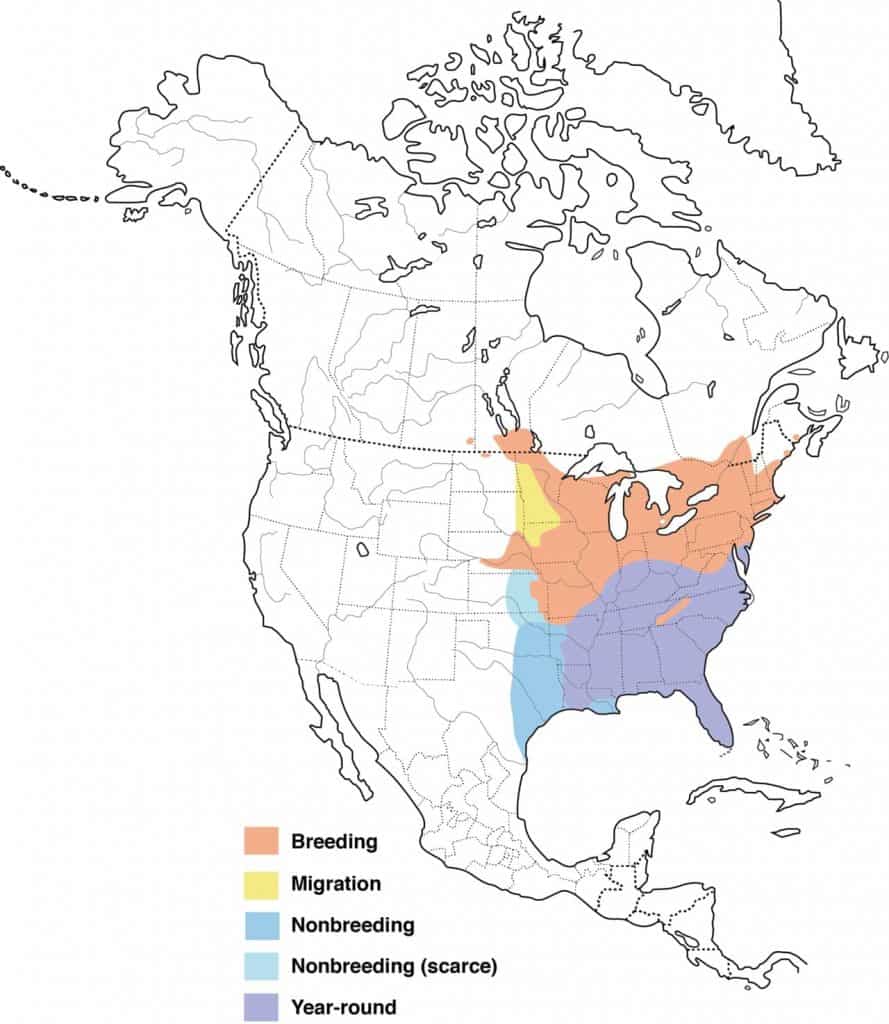
Flame-Colored Tanager
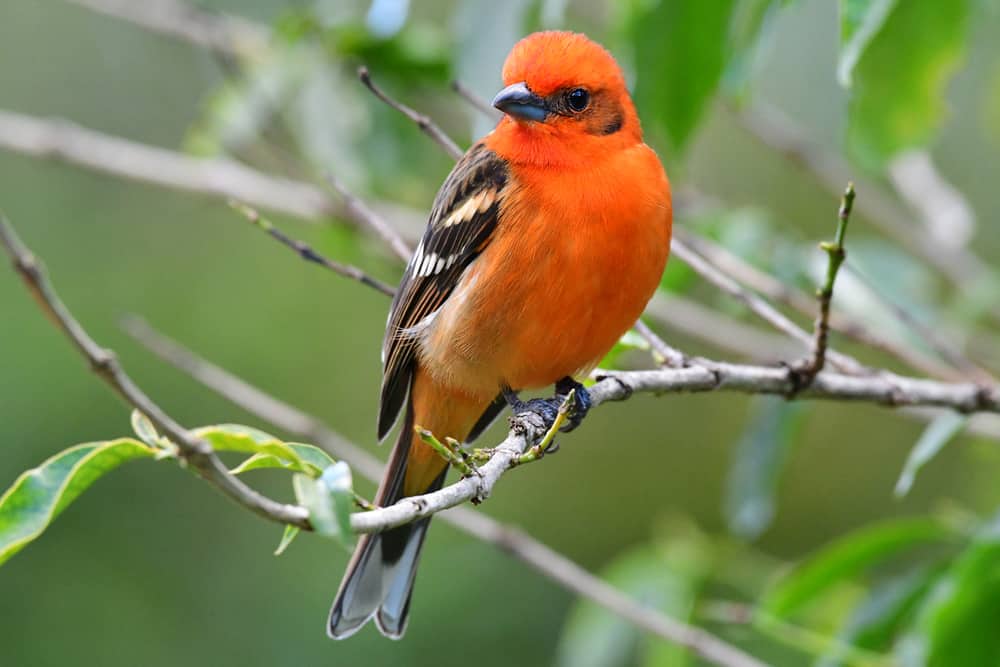
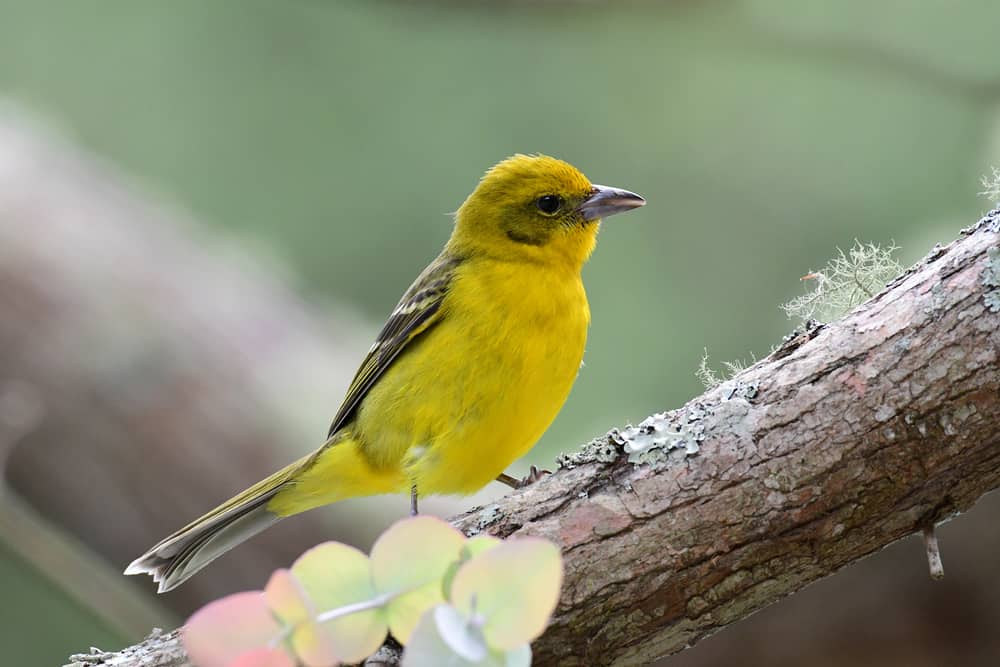
| Appearance | Bright flame-orange bird with brown feathers and tail. Also displays a brown mark below the cheek. Gray bill with additional white markings on the wings. The female is yellow instead of orange. |
| Diet | Insects and fruit. |
| Feeder Food | Unknown |
| Habitat | Pine and coniferous wooded areas in mountainous foothills within their range. |
| Nesting | Unknown |
Range Map
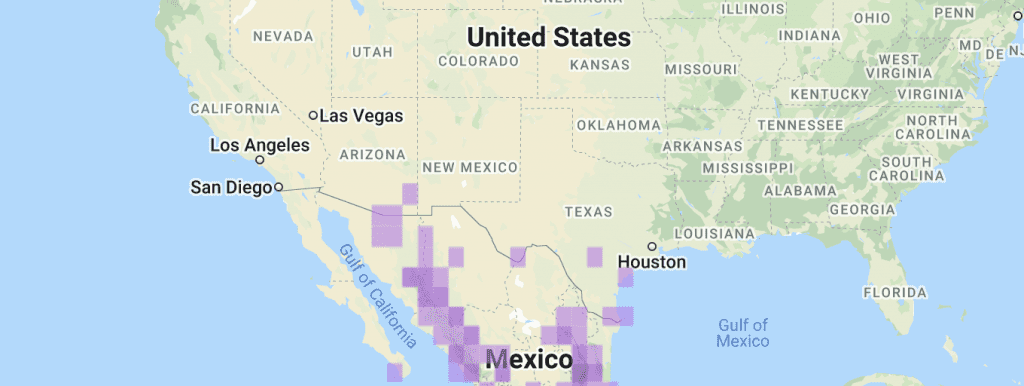
Hooded Oriole
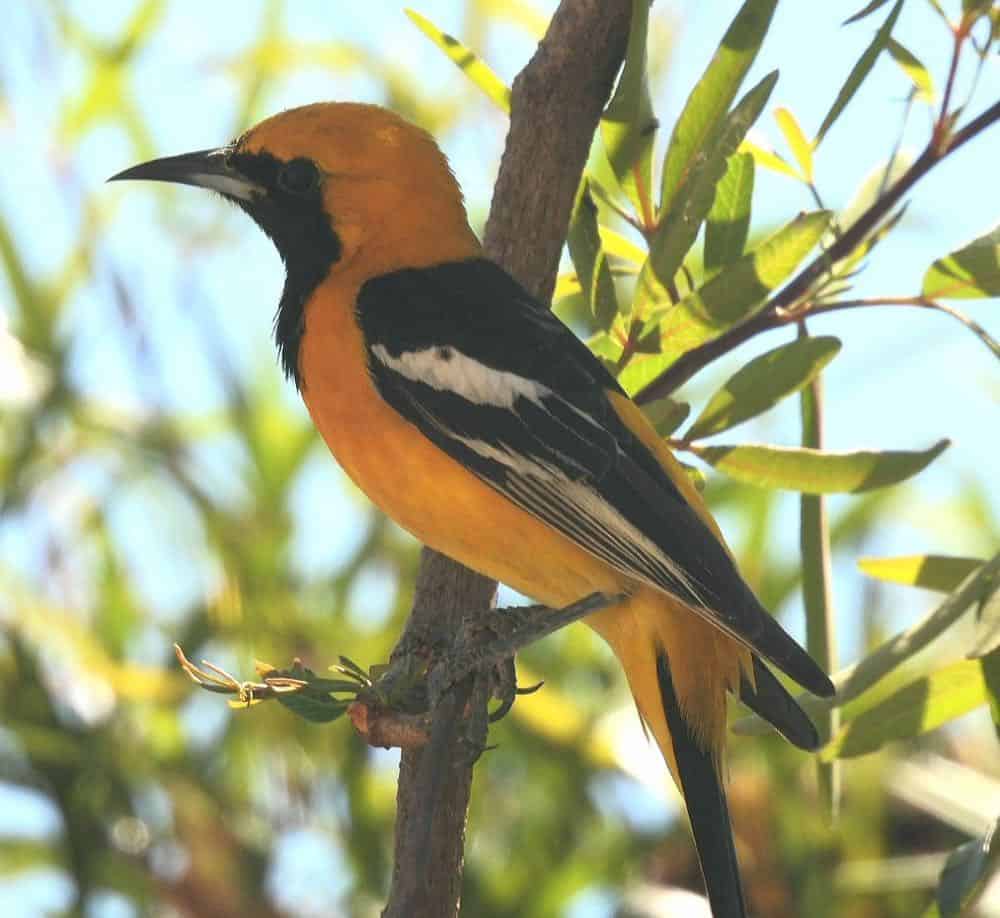
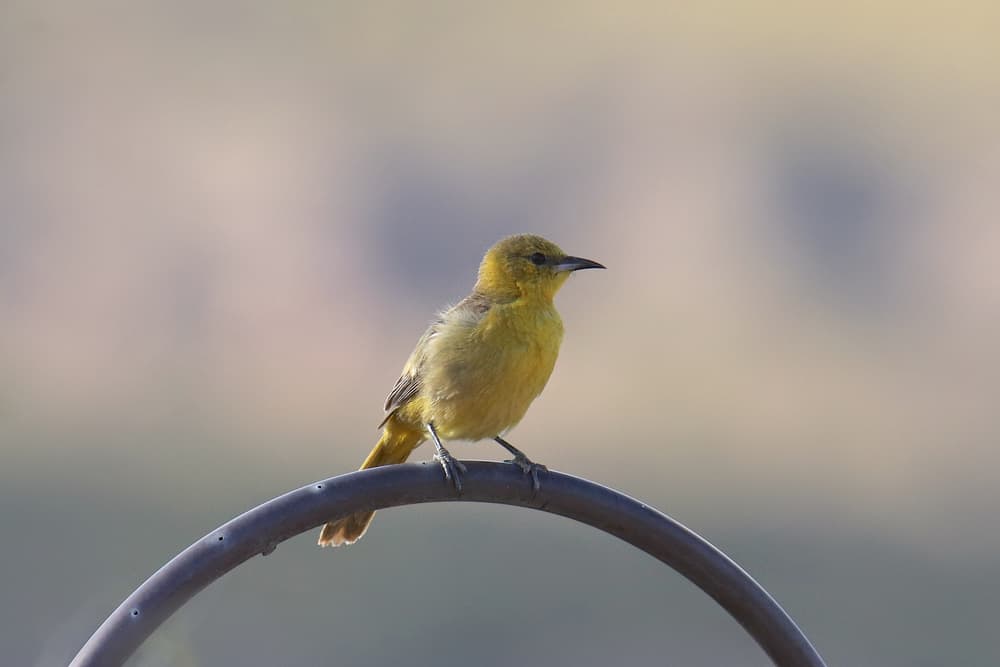
| Appearance | Hooded Orioles are medium-sized- birds about 8″ long. The male is a deep orange with a black face, throat, wings (+ white wingbars), and long tail. They also have a long pointy turned down bil. • A juvenile male is the same with bright yellow instead of orange. • The female is yellow with an olive back and black wings with white wingbars. |
| Diet | Insects, spiders, fruits, and nectar. |
| Feeder Food | Fruit and nectar. |
| Habitat | Open, dry areas with scattered trees – especially palm trees. |
| Nesting | These birds nest in shade trees, palm trees, or large shrubs about 10-45′ up. The nest is a suspended cup-style. They have 1-2 broods/season and 4 eggs/brood that are whitish to pale blue with dark blotches. Incubation is for about 13 days. Fledglings leave the nest at about 14 days. |
Range Map
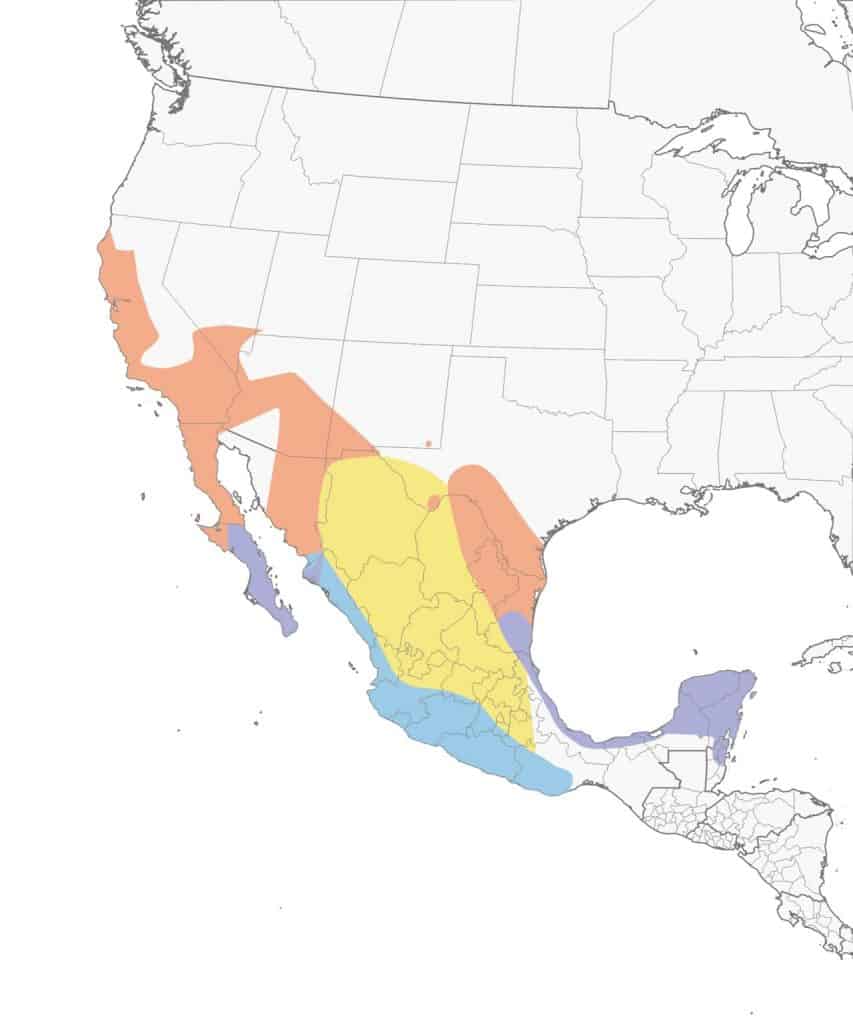
Olive Warbler
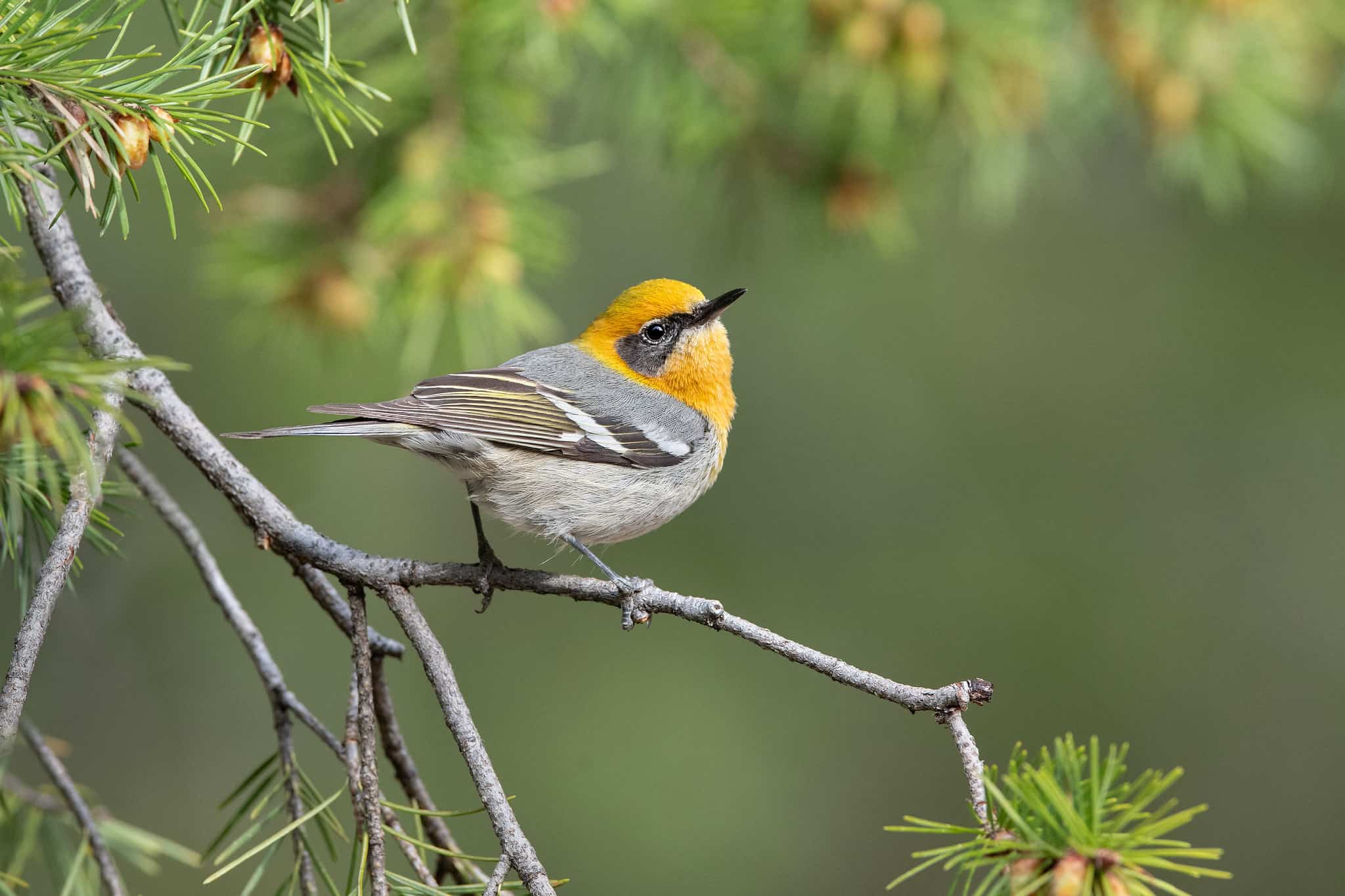
| Appearance | Olive warblers are small birds with an orange head, throat, and chest. They have a black eye mask. Most of the body is gray with black wings and white wing bars. The female is more subdued and more yellow vs orange. |
| Diet | Insects. |
| Feeder Food | Unlikely to visit a feeder. |
| Habitat | Forested areas comprised of coniferous trees. |
| Nesting | Nests are located very high up in coniferous trees – 30-70′ up placed on the outer branches. They have 3-4 blue-white eggs with brown speckles. |
Range Map
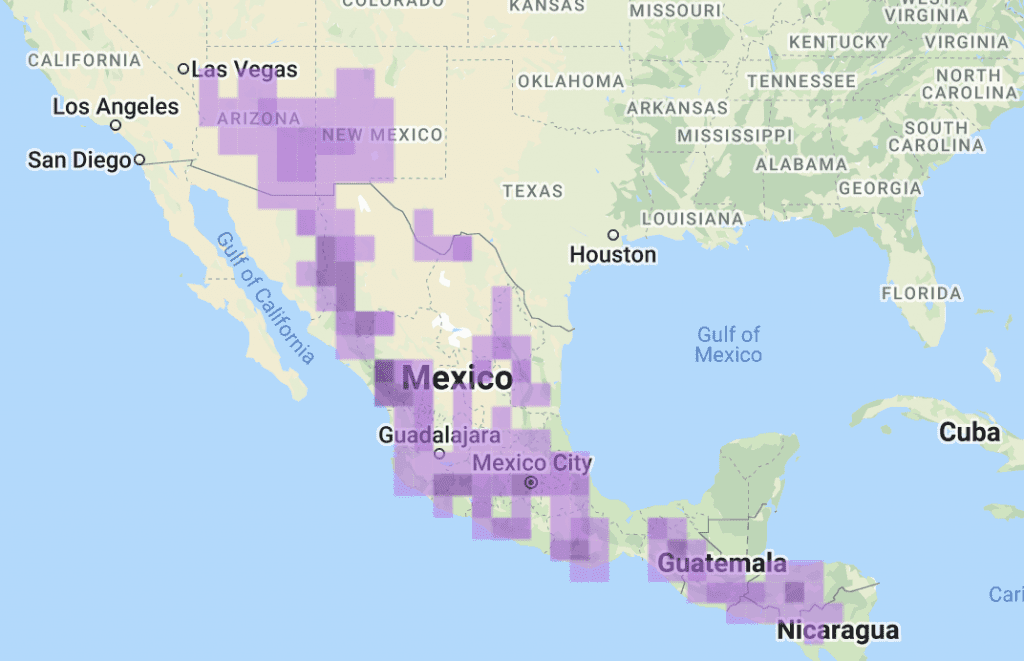
Orchard Oriole
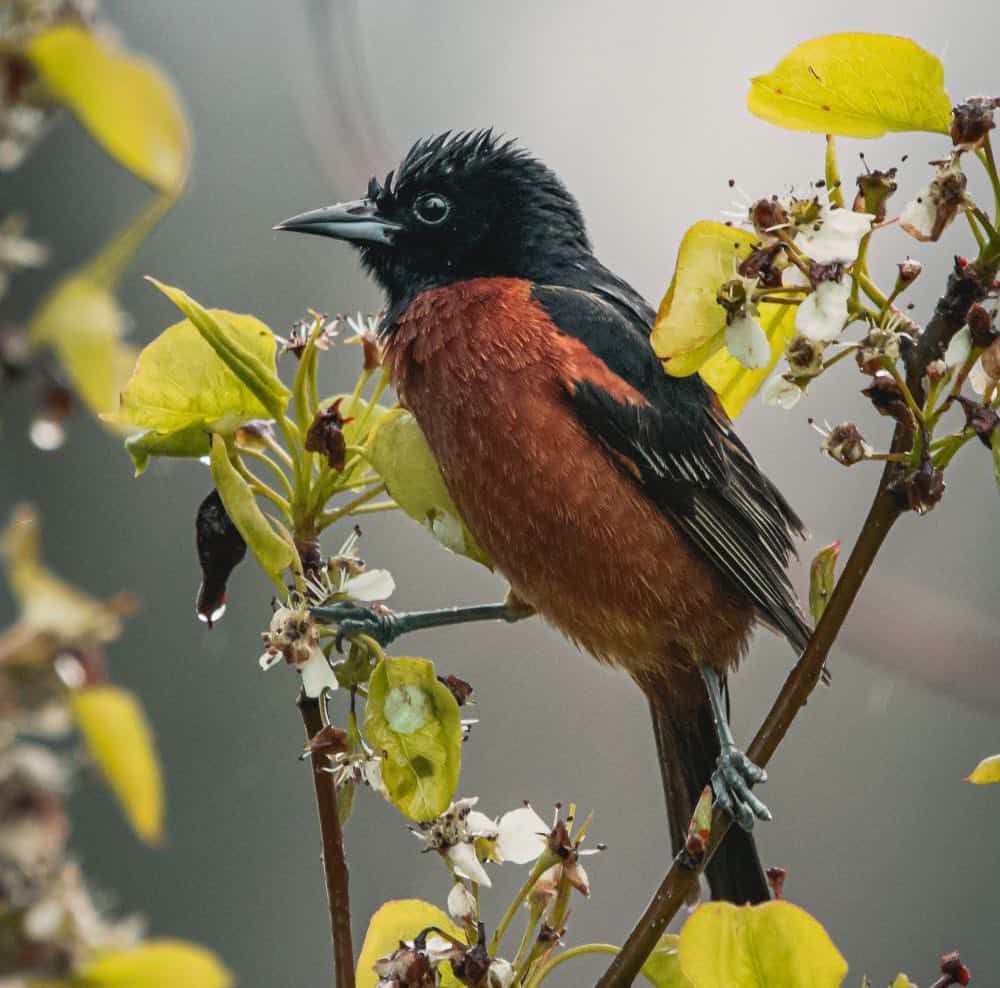
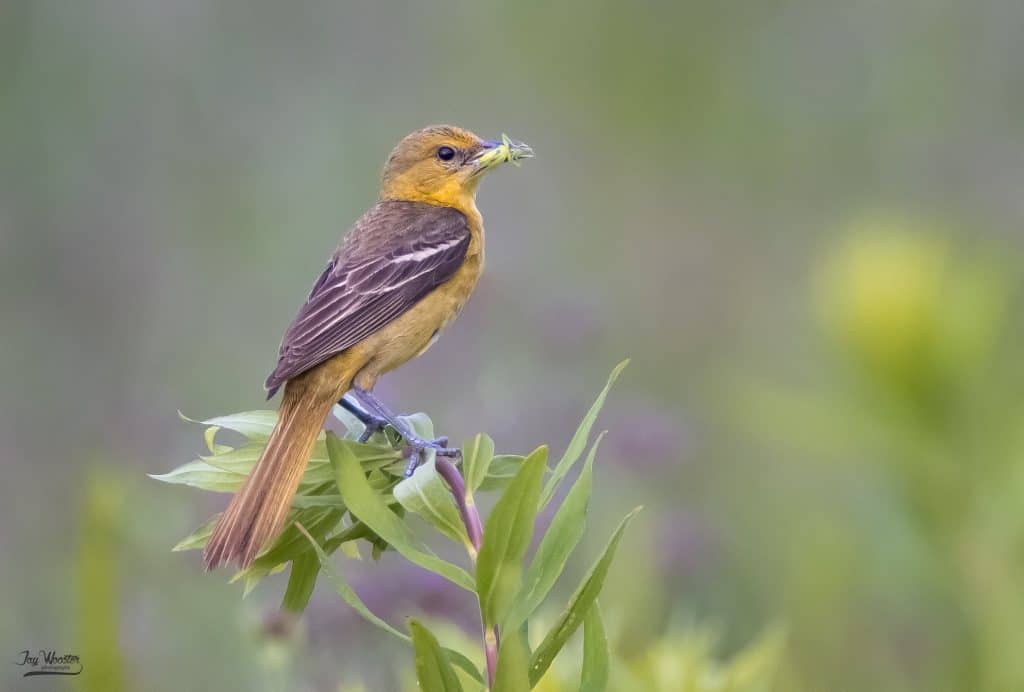
| Appearance | The orchard oriole is a medium-sized bird about 7″ long. The male has black upperparts and orange-chestnut underparts. They have a pointy bill that points downward. The female is a pale yellow with black wings and white wingbars. |
| Diet | Insects, spiders, fruits, and nectar. |
| Feeder Food | Cut fruit and nectar. |
| Habitat | This bird prefers open woodlands along waterways as well as open shrubby areas. |
| Nesting | They nest on the outer branches of a tree between 10-50′ up. Their nest is cup-shaped and hangs about 4″ long. They have 1-2 broods/season, 4-6 eggs/rood, and incubate for 12-14 days. Fledglings leave the nest at about 11-14 days. |
Range Map
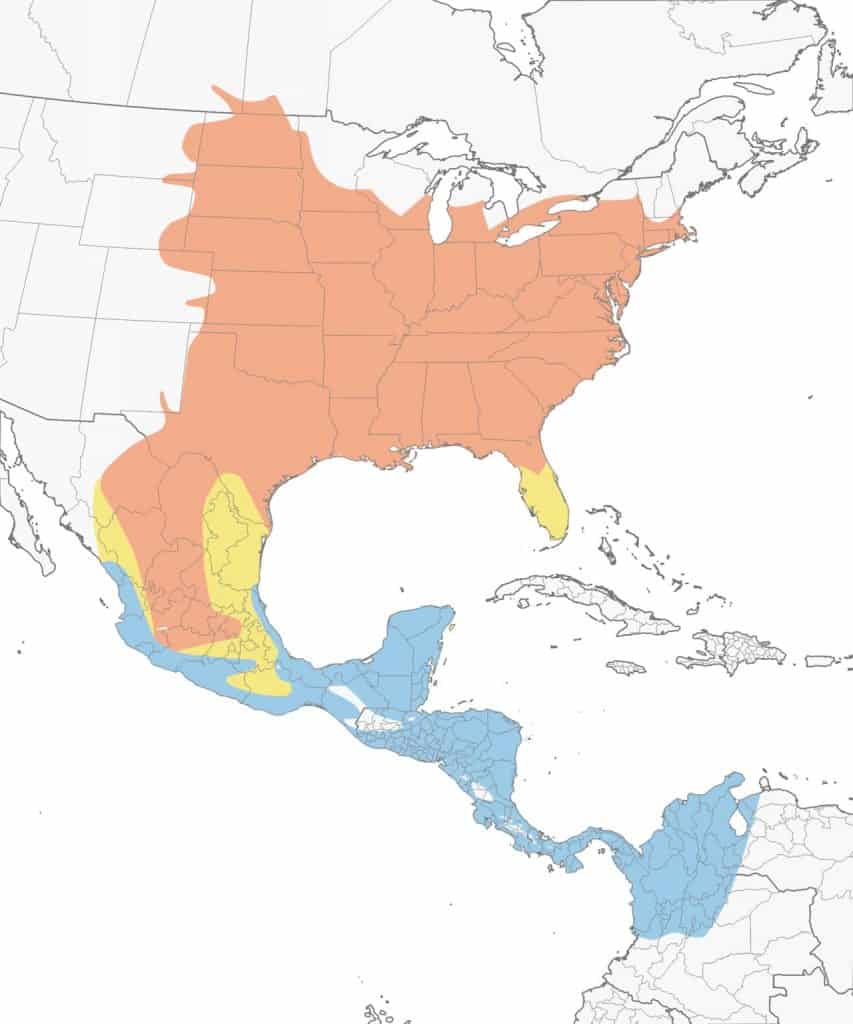
Spot-breasted Oriole
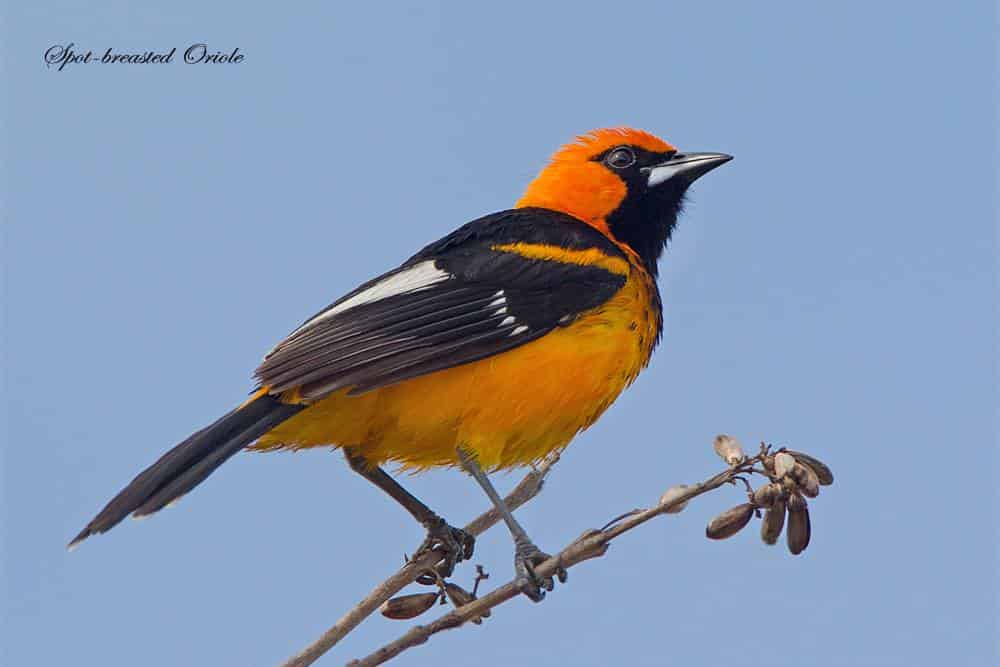
| Appearance | Spot-breasted orioles are large birds about 9″ long. They have a deep orange head and flaming orange underparts. The wings are black as well as the throat, and mask. Black spots on the breast. The female is the same |
| Diet | Insects, berries, and nectar. |
| Feeder Food | Unknown. |
| Habitat | Scrubby, vegetated areas, and forested edges. |
| Nesting | The pouch-like nest is suspended near the end of forked tree branches. They likely have about 2-5 eggs and they’re white with dark purple markings on them. |
Range Map
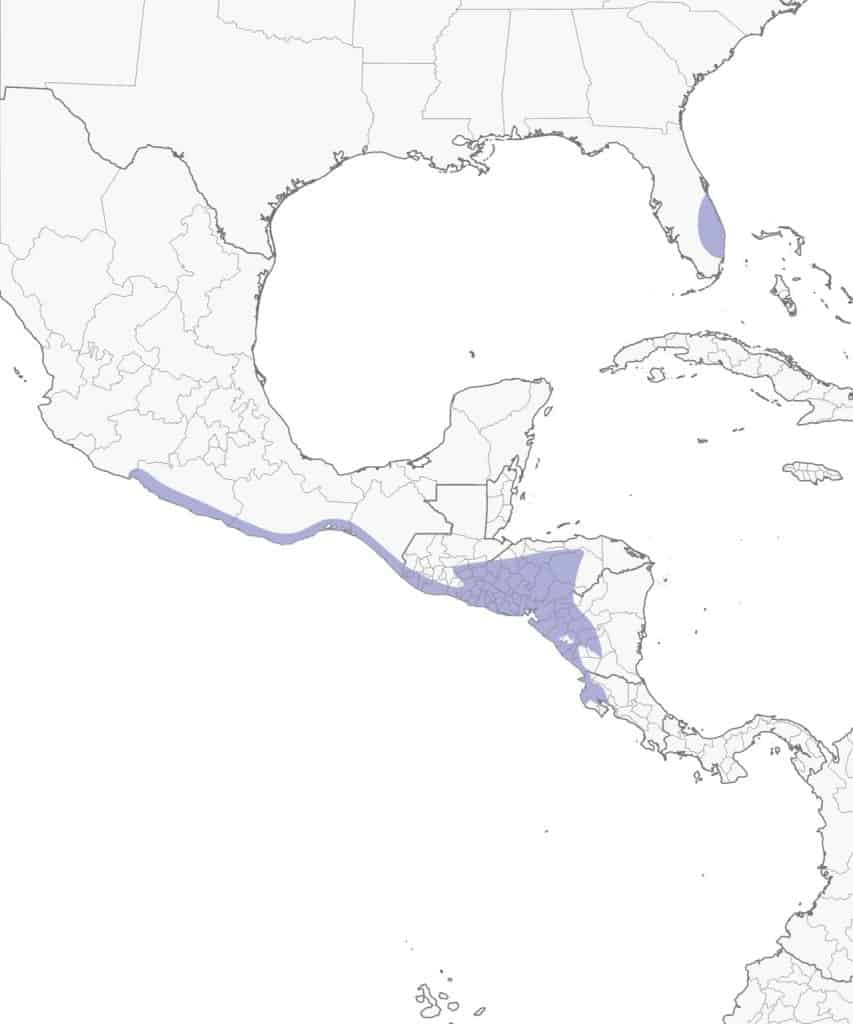
Spotted Towhee
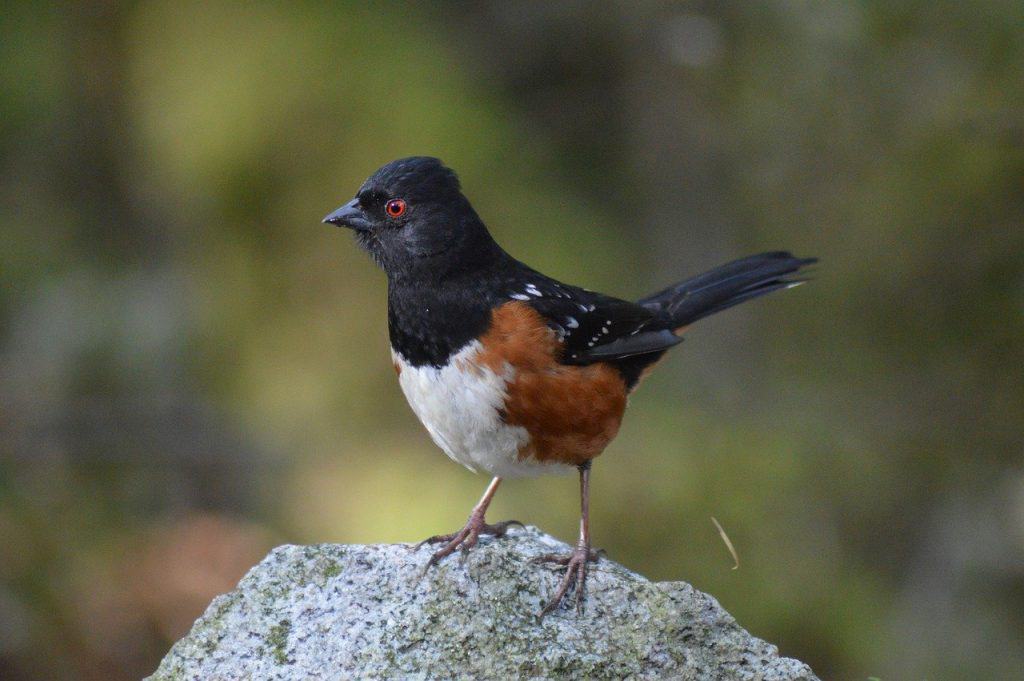
| Appearance | The spotted towhee is a medium-sized bird about 7-8″ long. They are black with a white belly and orange rust on the sides of their belly. The wings are black with white spots. The female is similar except she’s a deep brown rather than black. |
| Diet | Insects, nuts, berries, and seeds. |
| Feeder Food | Small sunflower seeds on the ground. |
| Habitat | Open areas, that are shrubby and thick with vegetation, as well as wooded edges. |
| Nesting | The nest is placed on the ground or within a low-growing shrub, generally concealed with grass or other natural vegetation. They have 1-3 broods/season and 2-6 eggs/brood that is white, gray, green, or pink with speckles. Incubation is for 12-13 days. Juveniles fledge at about 10-12 days. |
Range Map
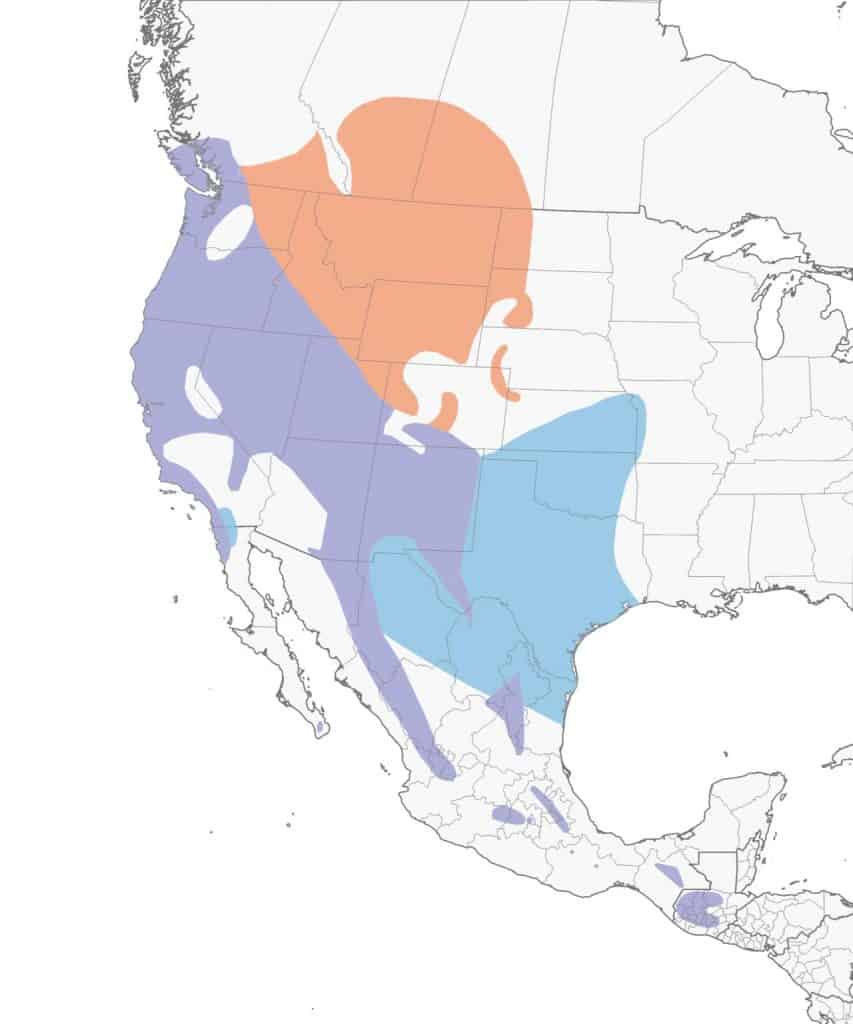
Varied Thrush
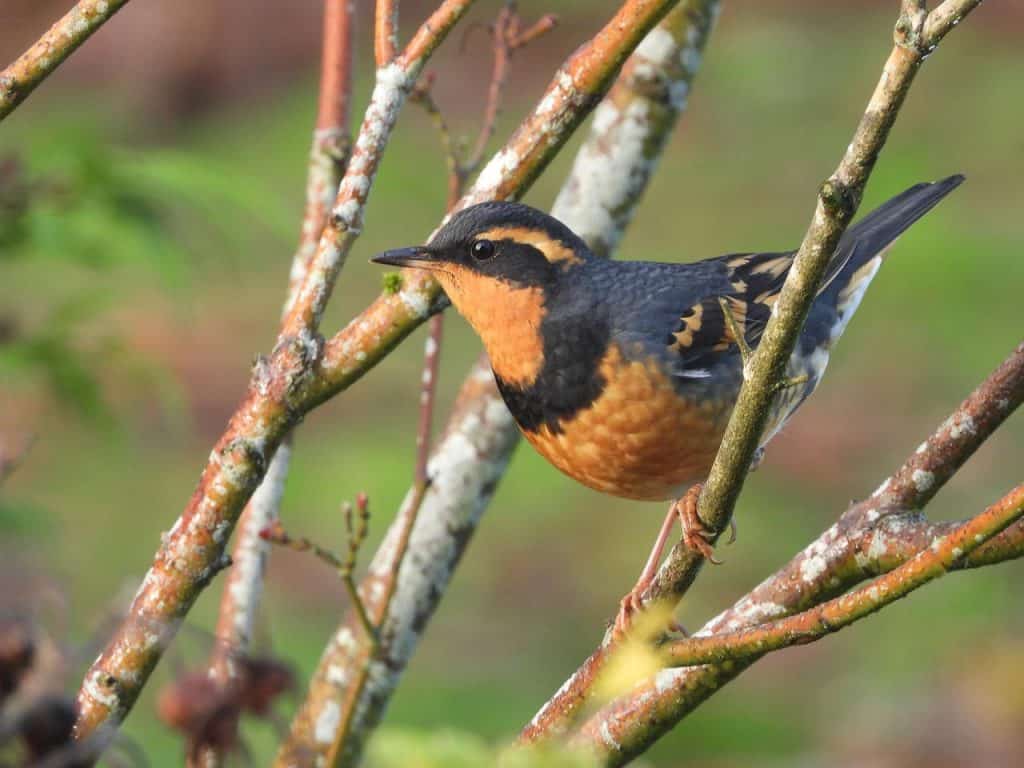
| Appearance | Varied thrushes are large birds about 9 1/2″ long. They are orange underneath except for the black band across the breast. Orange also stripes each side of the head above the eyes. Black back, head, and weaved with orange on the wings. The female is the same except brown instead of black. |
| Diet | Insects, berries, fruits, and nuts. |
| Feeder Food | May forage for food beneath a feeder. |
| Habitat | This bird prefers moist coniferous and mixed forests with a closed canopy. |
| Nesting | Nest: They nest in a conifer 4-20′ up. Females choose the location and build the nest, including layers of moss, mud, twigs, leaves, and grass. Broods: They have 12-broods/season Clutch: 1-6 eggs/brood Egg color: Pale sky blue with occasional dark-brown speckling. Egg size: 1.1 – 1.4 inches by 0.8 – 0.9 inches Incubation: 12 days. Fledglings leave the nest at about 13-15 days. |
Range Map
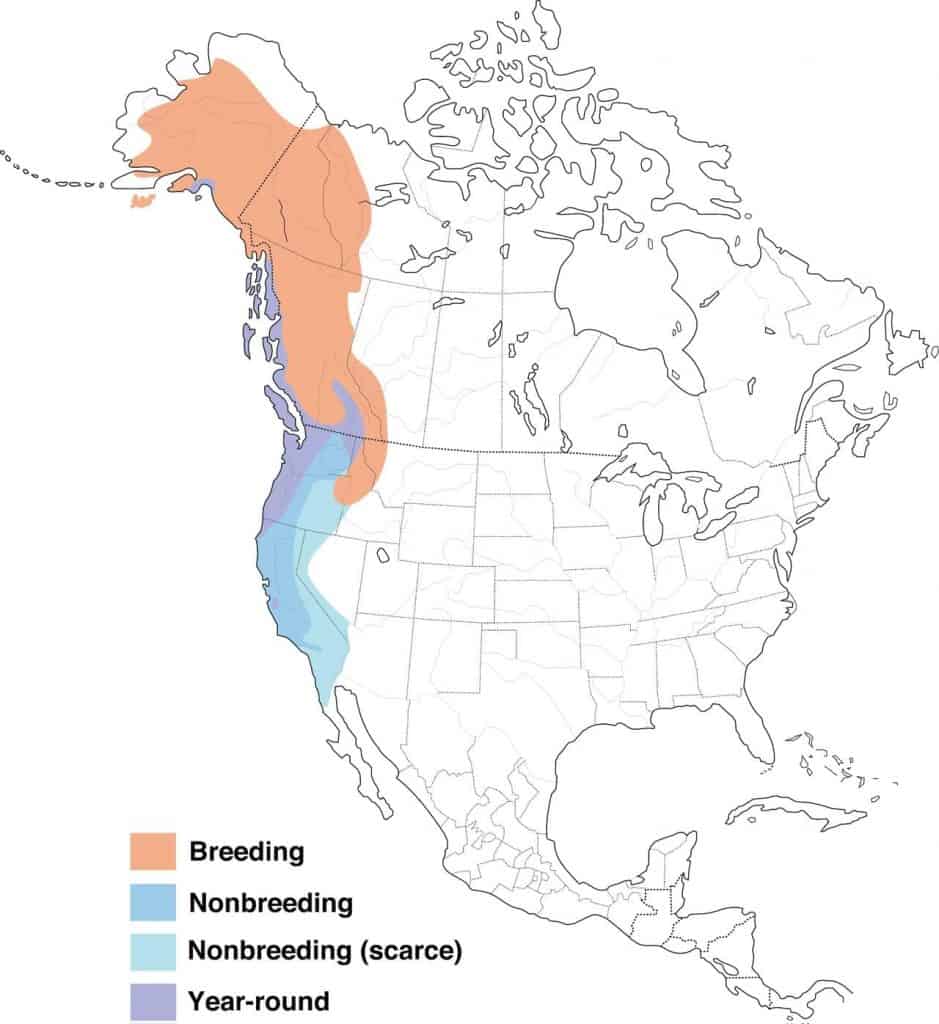
Western Spindalis
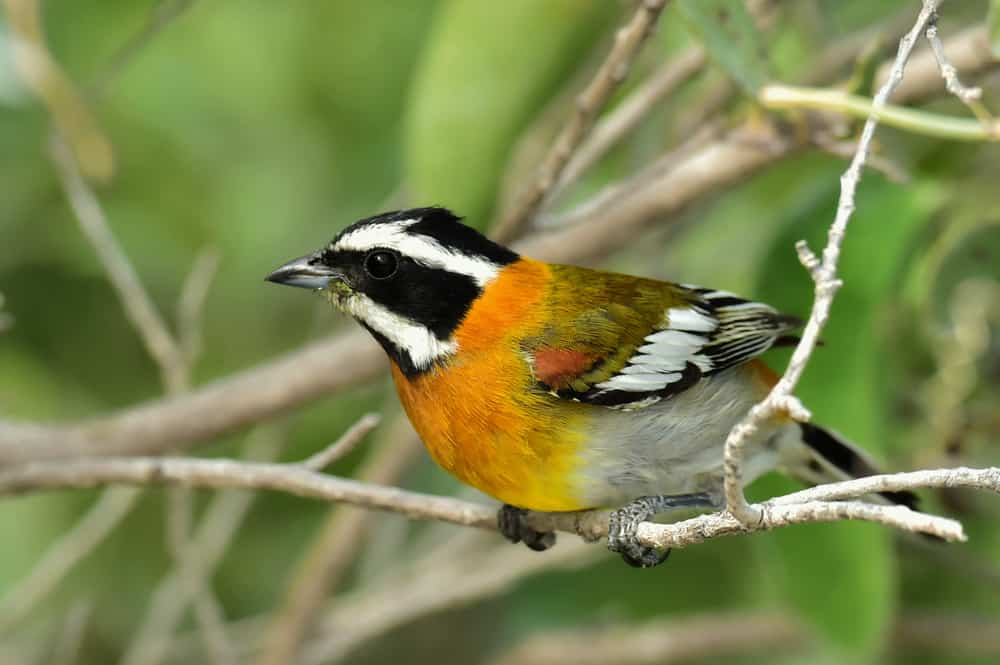
| Appearance | The western spindalis has a burnt orange chest, stripe from the bill to the chest, upper back, and as well as under lower wings. The head and wings are black-and-white striped, and the belly is bright white. The female is similar but a drab olive green instead of orange. |
| Diet | Although not confirmed, they likely consume fruit as they’re frequently found in fruiting trees. |
| Feeder Food | Unknown |
| Habitat | The western spindalis are typically found in the Caribbean and South America. However, they’ve also been sighted in southern Florida. |
| Nesting | Unknown |
Range Map
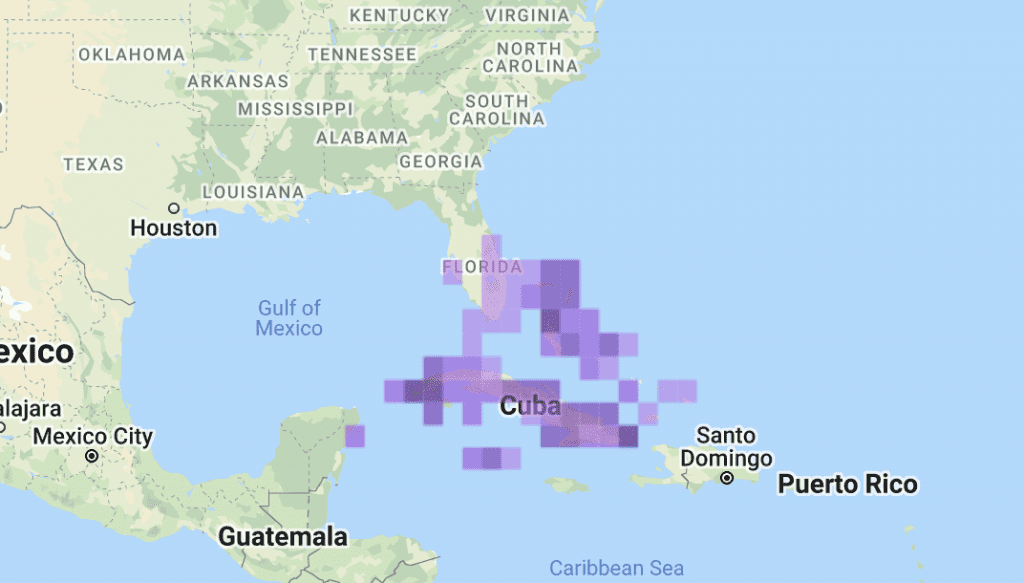
Conclusion
Hopefully, you’ve identified the orange bird with black wings you were looking for or just broadened your knowledge of orange black-winged birds in North America. If you want to see more of a particular species of these orange birds, consider taking steps to attract them to your yard.
Happy Birding!

